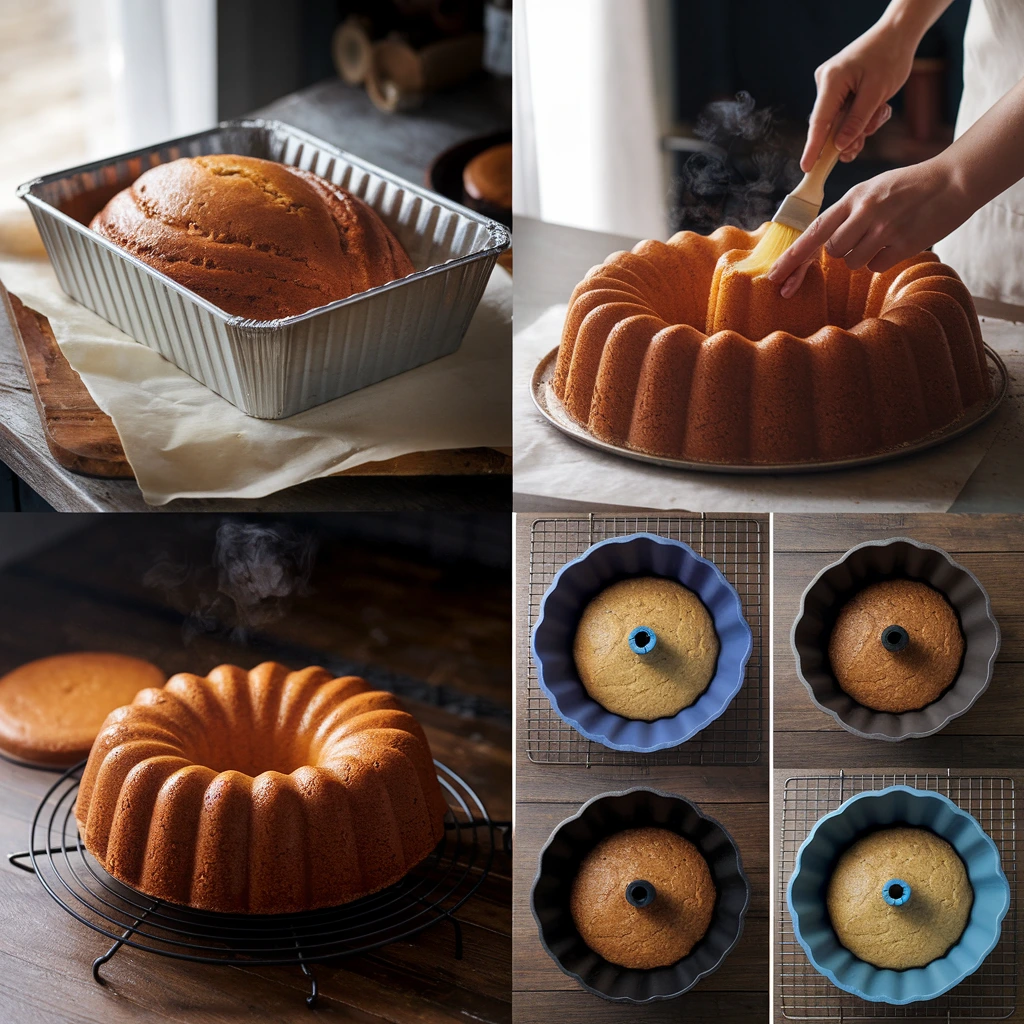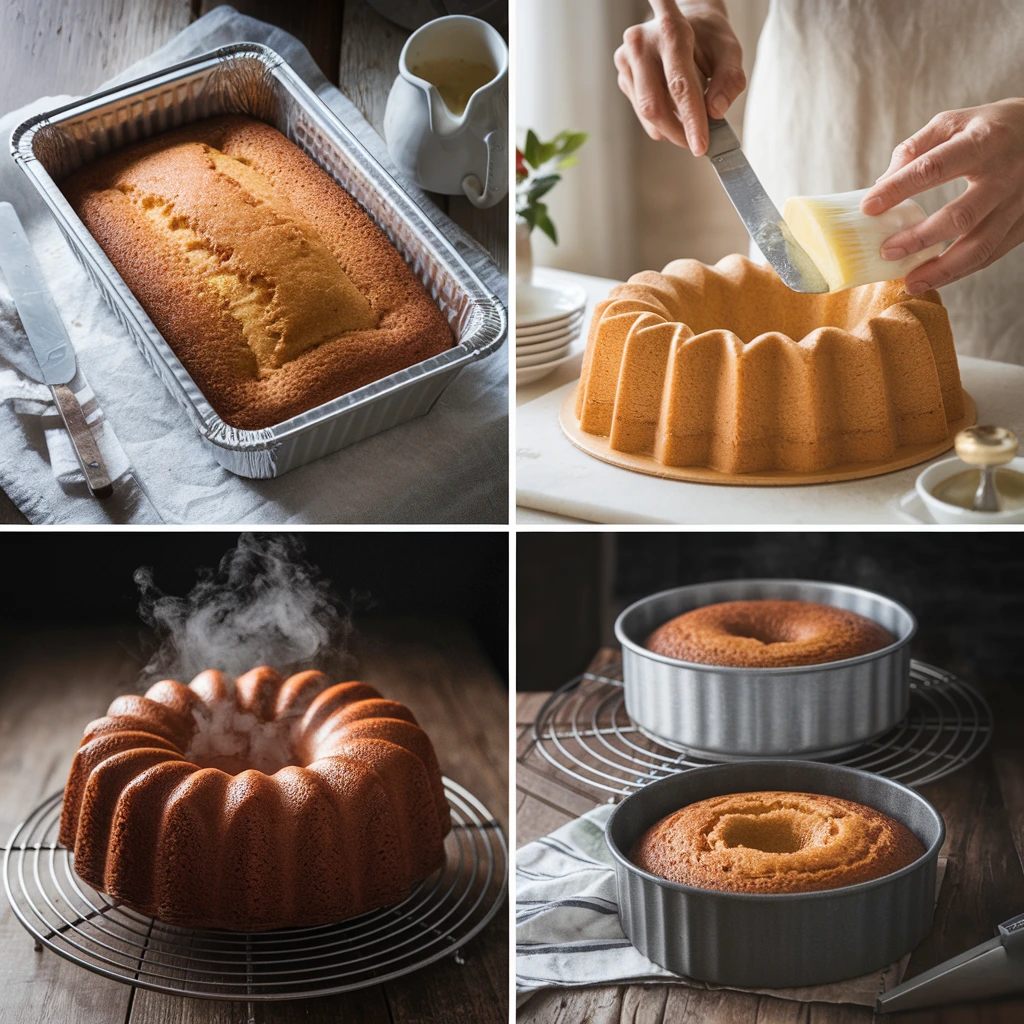There’s nothing more satisfying than a perfectly baked pound cake—golden brown, moist, and rich with buttery flavor. But achieving that flawless bake isn’t just about the recipe; it all starts with the right pound cake pan! 🥮
Many home bakers struggle with sticking, uneven baking, or dry cakes, and more often than not, the culprit is the wrong pan or improper pan preparation. Whether you’re using a Bundt pan, loaf pan, or non-stick aluminum pan, knowing the secrets to choosing, preparing, and using it correctly can make all the difference.
And if you love breakfast treats as much as you love pound cake, check out this Pancake Breakfast Near Me Guide to discover the best spots for fluffy, delicious pancakes near you! 🥞
In this guide, we’ll uncover expert pound cake pan secrets to help you:
- Pick the best pan for moist, evenly baked pound cakes
- Prevent sticking, sinking, or overbaking issues
- Master the right way to grease and prepare your pan
Ready to elevate your pound cake game? Let’s dive in! And for an in-depth look at different types of bakeware, check out this detailed guide on cake pans from Serious Eats. 🍰
Choosing the Right Bakeware for Perfect Pound Cakes
Aluminum, Non-Stick, or Silicone: Which One Works Best?
The type of pan you use can make or break your pound cake. Aluminum pans conduct heat evenly, ensuring a consistent bake, while non-stick pans make cake release effortless but can sometimes cause over-browning. Silicone pans are easy to clean but may not provide the structure needed for a well-risen cake. If you want the best results, a heavy-duty aluminum pan with a light-colored interior is ideal for even baking without excessive browning.
Loaf vs. Bundt: Finding the Perfect Shape for Your Cake
Choosing between a loaf pan and a Bundt pan depends on the texture and presentation you want. Loaf pans create a classic, dense pound cake with a uniform crumb, while Bundt pans allow for better heat circulation, reducing the chances of a raw center. If your recipe is high in butter and sugar, a Bundt pan’s design helps distribute heat more efficiently. The key is to adjust baking time accordingly—Bundt cakes often bake faster than loaf cakes.
Understanding Pan Size and Capacity for Even Baking
Size matters when baking pound cakes. A standard 9×5-inch loaf pan holds about 8 cups of batter, while a 10-inch Bundt pan holds around 12 cups. Overfilling your pan can cause the cake to spill over, while underfilling may lead to a flatter bake. Always leave at least 1 inch of space at the top to allow for proper rising.
Prepping Your Pan to Prevent Sticking and Uneven Bakes

Greasing & Lining: The Secret to a Perfect Release
Ever had a cake stick to the pan despite using a non-stick coating? The best trick is to grease your pan thoroughly with butter or oil, then lightly dust with flour. If using a Bundt pan, get into every crevice to prevent sticking. Parchment paper works well for loaf pans but isn’t practical for Bundt cakes. A foolproof method is to mix equal parts butter, oil, and flour into a paste and brush it onto the pan.
Preventing Sticking: Common Mistakes to Avoid
Using cold butter or oil can lead to uneven greasing. Avoid sprays that contain lecithin, as they can create a sticky residue over time. If using a non-stick pan, make sure the coating isn’t worn out—scratches reduce effectiveness. Cooling your cake too long in the pan also increases the chances of sticking. Let it rest for 10-15 minutes before unmolding.
The Right Way to Fill Your Cake Pan
Too much batter can cause overflow, while too little results in a thin cake. Fill your pan about ⅔ full for the best rise. If using a Bundt pan, make sure to spread the batter evenly to prevent air pockets. Using a kitchen scale ensures even distribution, so every pound cake turns out perfect.
Baking Tips to Get a Moist & Even Pound Cake
Mastering the Right Baking Temperature
The ideal baking temperature for pound cakes is 325°F (163°C). A lower temperature ensures even baking without drying out the edges. Preheating your oven is crucial, as starting with a cold oven can result in a dense texture. For added precision, use an oven thermometer since most ovens have temperature variations.
Avoiding Overbaking & Dry Texture
Overbaked pound cakes become dry and crumbly. The toothpick test is useful but can be misleading—a slight crumb on the tester means the cake is perfect. Another method is the spring-back test—lightly press the top, and if it bounces back, it’s ready. Avoid opening the oven door too early to prevent temperature fluctuations that cause sinking.
Cooling the Cake the Right Way
Letting the cake cool in the pan for too long can create condensation, leading to a soggy bottom. The best practice is to let it sit for 10-15 minutes before flipping it onto a wire rack. If the cake resists release, gently tap the pan on the counter or use a plastic knife around the edges.
Common Pound Cake Pan Problems & How to Fix Them

Cake Stuck in the Pan? Here’s What to Do!
If your cake refuses to budge, don’t panic. Place a warm towel around the pan for a few minutes to loosen it. Running a thin plastic knife around the edges can also help. For Bundt pans, gently shake the pan side to side before flipping. If all else fails, place it in the freezer for 10 minutes, then try again.
Why Your Pound Cake Sinks in the Middle
A sunken center is often caused by underbaking or too much leavening. If your cake collapses, it may have been removed from the oven too soon. Using too much baking powder can create excess air pockets, leading to a quick rise followed by a collapse. Stick to the recipe’s recommended amount and always test doneness before pulling it out.
Uneven Baking? How to Fix Hot Spots in Your Oven
Hot spots in your oven can cause one side of the cake to bake faster than the other. Rotate your cake halfway through baking to ensure an even bake. Placing a baking stone on the lower rack can help regulate heat. If you notice uneven browning, try using an insulated cake strip around the pan.
Best Pound Cake Pans Recommended by Bakers
Top Bakeware Brands for Pound Cakes
Not all cake pans are created equal. Brands like Nordic Ware, Wilton, and USA Pan are highly rated for their durability and even heat distribution. Nordic Ware Bundt pans are known for their intricate designs, while USA Pan loaf pans feature a non-stick Americoat coating that prevents sticking.
Where to Buy Quality Pound Cake Pans
If you’re looking for a reliable pound cake pan, check online stores like Amazon, Williams Sonoma, or Sur La Table. Local specialty kitchen stores also carry high-quality bakeware. When choosing a pan, opt for heavy-gauge metal to avoid warping over time.
Caring for Your Pound Cake Pan
Proper care extends the lifespan of your bakeware. Never use metal utensils on non-stick pans to prevent scratching. Hand wash with mild soap and a soft sponge instead of using a dishwasher, which can wear down the coating. Store pans stacked with parchment paper in between to avoid scratches.
Conclusion
Mastering the secrets of the perfect pound cake pan makes all the difference between a good and an amazing bake. Choosing the right material, properly preparing the pan, and using expert baking techniques ensures consistently moist, evenly baked pound cakes every time. Try these tips for your next bake and experience the difference!
Want to explore more about bakeware essentials? Check out this detailed guide on cake pans for more expert recommendations. Happy baking! 🍰

